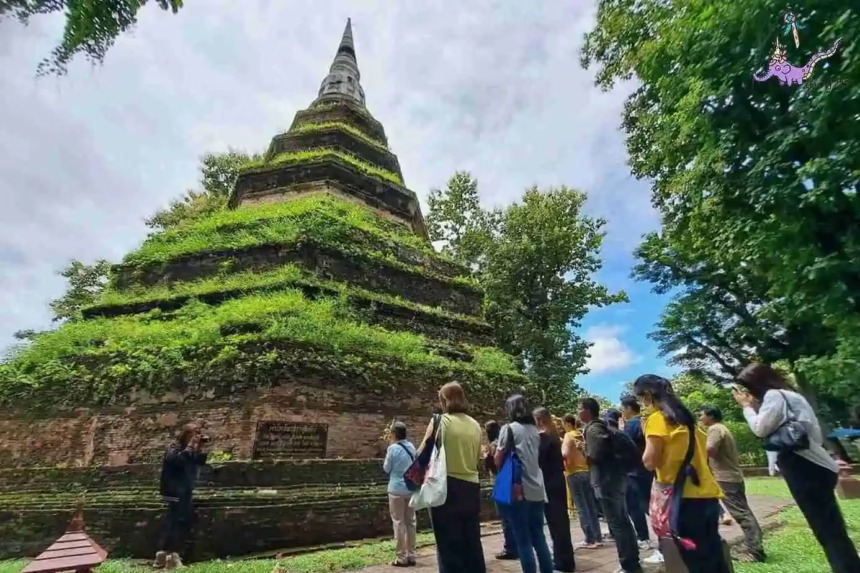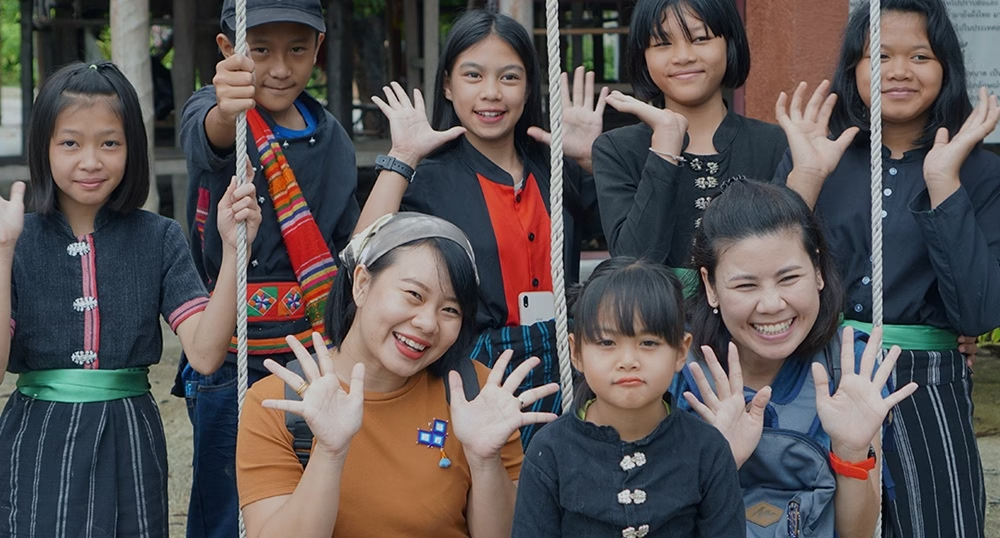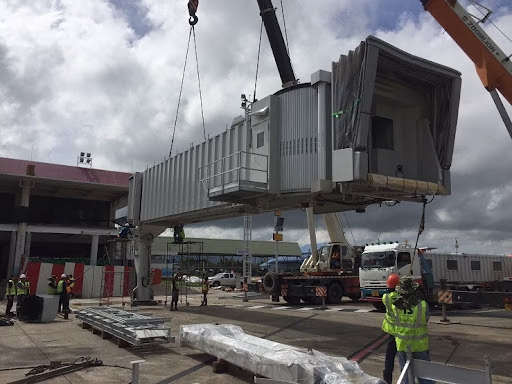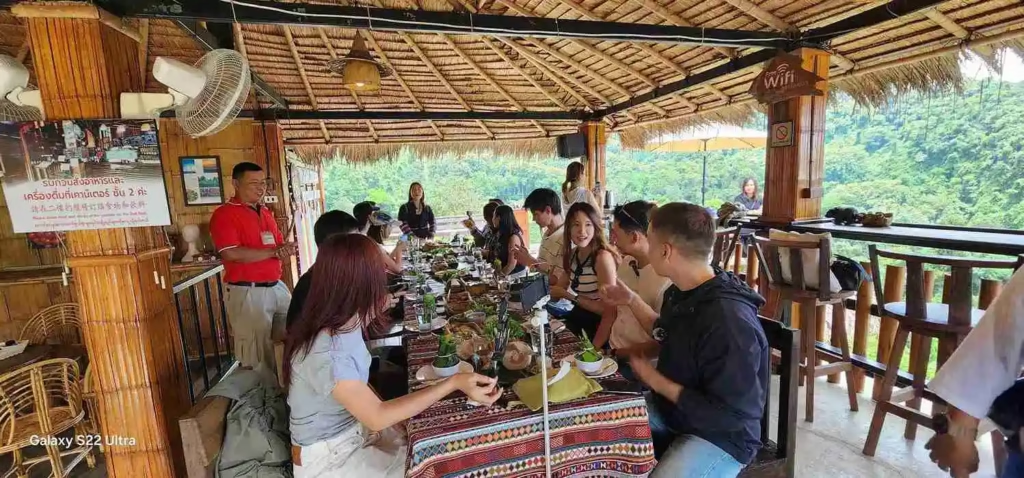Chiang Rai steps up tourism standards as 5 local communities earn “CBT Thailand Standard” certification, while Mae Fah Luang Airport adds 2 new passenger boarding bridges to reinforce “quality, safety, and sustainability”
Five community tourism villages in special areas of Chiang Rai have been certified under the Community-Based Tourism Thailand Standard (CBT Thailand Standard) for the fiscal year 2025 by the Department of Tourism.
At the same time, Mae Fah Luang Chiang Rai International Airport is upgrading key facilities by removing and installing two new passenger boarding bridges. All works follow the Safety Risk Management (SRM) process and comply strictly with airport operation manuals and standards.
These two developments highlight what could be called the twin pillars of a quality destination: strong community tourism standards and safe, well-managed airport standards. Together, they help build a consistent travel experience where visitors can feel confident from the moment the aircraft touches the runway to the moment they arrive at a village guesthouse.
CBT Thailand Standard, from certificate to “quality promise” for communities
The Community-Based Tourism Thailand Standard, managed by the Department of Tourism, is a practical tool to raise tourism quality with communities at the centre. It supports balanced development in five main areas: management, services, safety, culture, and environment.
The goal is not only to welcome visitors. It is to make sure tourism leaves a positive mark on the community economy, local identity, and the surrounding ecosystem.
Chiang Rai communities certified in 2025
- Mae Sai District
• Community Enterprise, Doi Pha Mee Tourism Group
• Community Enterprise, Doi Pha Mee Travel Group - Mae Chan District
• Community Enterprise, Thai Yong Lifestyle, San Thang Luang
• Thai Yong Lifestyle, Ban San Thang Luang - Chiang Saen District
• Community Enterprise, Chiang Saen Tourism - Mueang Chiang Rai District
• Community Enterprise, OTOP Nawatwithi Tourism, Ban Mueang Ruang, Mae Khao Subdistrict
Key themes of the CBT standard
The CBT Thailand Standard rests on five core ideas: good management, strong local economy, cultural identity, environmental care, and reliable service and safety.
When these five areas come together, community hospitality is no longer just friendly hosting. It becomes a clear quality system that visitors, tour operators, and authorities can all understand and check.
Local stories strengthened through standards.
- Doi Pha Mee, Mae Sai, border mountain views, hill coffee, and Akha culture
Doi Pha Mee sits high on the hill where you can see the border between Thailand and Myanmar. The village is known for quality Arabica coffee and rich Akha traditions.
With CBT certification, the community now manages hiking routes, local guides, traditional meals, and safety systems in a more structured way. Everyone works with the same standards, from service providers and visitors to regulators, so the experience stays safe, meaningful, and consistent.
Thai Yong lifestyle, San Thang Luang, Mae Chan, craftwork, safe farming, and community governance
The Thai Yong identity shines through handwoven textiles, local dishes, and daily life in the village. These cultural strengths link closely with safe farming practices and strong community leadership.
Raising standards has opened the door to more learning activities and workshops, as well as cultural routes that can sustainably welcome more guests. Even as numbers grow, the Thai Yong way of life remains authentic and respectful.
- Chiang Saen on the Mekong, from ancient heritage to creative experiences
Chiang Saen is an ancient town that blends Lanna heritage, the Mekong River, and a long trading history. Today, this heritage appears in modern activities, such as old temple routes, creative art workshops, local food journeys, and wellness tourism.
The CBT standard helps the community arrange these experiences into a clear storyline. Visitors can follow routes that are easy to understand, enjoy, and stay safe while learning about the town.
- Ban Mueang Ruang, Mae Khao Subdistrict, Mueang Chiang Rai, OTOP Nawatwithi, and circular local economy
Ban Mueang Ruang is well known for its waste management practices, which have led to the creation of “Ban Mueang Ruang soil”, an innovation that turns waste into value. The village also hosts study visits, CSR activities, and a learning centre focused on quality of life.
The community places importance on cleanliness, order, and hands-on learning. This ties in well with CBT principles, especially in environmental protection, local economy, and quality services.
The shared lesson from these communities is simple. Standards take the good things that already exist and turn them into a clear system that everyone can follow. This includes how to welcome guests, how to manage activity safety, emergency plans, food hygiene, and two language interpretation materials.
Airport upgrades, a new passenger boarding bridge, and a better welcome at the “city gate”
Mae Fah Luang Chiang Rai International Airport is in the process of removing and installing two new passenger boarding bridges. This project, described in more detail at this link, is a form of change management that directly affects ground operations and passenger movement.
Because of this, the airport must carry out risk assessment, define control measures, communicate changes, train staff, and monitor results. All of this follows the Safety Risk Management (SRM) process and the airport operation manual.
What this upgrade means in practice
- Safety first
The airport sets clear work zones, warning signs, ground traffic plans, and strict boarding and disembarking procedures. - Better service quality
New bridges support smoother passenger flow, reduce bottlenecks, and improve on-time performance. - Closer links to communities
A smooth, safe journey through the airport marks the start of a positive experience before visitors even reach CBT villages.
When the “city gate” (the airport) invests in safety and service quality, and the “destination villages” invest in standards, environment, and culture, Chiang Rai tourism gains a strong double track. Quality at both ends of the journey supports long-term, community-based tourism growth.
Why standards matter to the local economy
- Trust leads to a steady income
Clear standards help tour buyers, organisations, and international visitors feel confident before they even arrive. They know they will receive quality experiences that are safe and friendly to the environment. This increases the chance of welcoming higher value visitors who stay longer, spend more, and learn more. - Protecting identity creates unique value.
CBT is not just “visiting a village”. It is learning about the value system that shapes the culture, natural resources, and people. Standards act like a fence that protects community identity from being distorted for quick profit. - Service and safety open global markets
Strong safety and service standards prepare communities to meet the needs of international markets and organisational groups, such as study tours, CSR events, and community-style MICE activities.
Fact box, CBT Thailand Standard in Chiang Rai, 2025
- Mae Sai, Doi Pha Mee (2 community enterprises)
- Mae Chan, Thai Yong, San Thang Luang (2 units)
- Chiang Saen, Chiang Saen town (1 community enterprise)
- Mueang Chiang Rai, Ban Mueang Ruang, Mae Khao Subdistrict (1 community enterprise)
Mae Fah Luang Airport, current projects
- Removal and installation of 2 passenger boarding bridges
- Change Management framework combined with Safety Risk Management (SRM)
- Main goals: safety, convenience, and on-time performance
Policy suggestions and ways to build on success
- Create a “standard routes” communication plan for the whole province
Design a communication plan that links the airport, the city, and CBT communities into one “quality route”. Provide clear information in both Thai and English, such as daily capacity, booking methods, safety guidelines, and basic community etiquette. - Open data and community dashboards
Share open data on activities, visitor capacity, environmental measures, and visitor guidelines. This helps travel businesses plan better, reduces overload in communities, and supports transparency. - Upskill in safety, environment, language, and digital tools
Build skills for local guides and hosts on emergency plans, inclusive activities for vulnerable groups, language abilities, and digital communication. This helps communities welcome premium and diverse visitor groups with more confidence. - Bring the circular economy to all communities.
Turn the Ban Mueang Ruang waste management model into a training module on “waste to value” and local innovation. This can reduce waste, cut costs, and create extra income in other villages. - Set up monitoring and review (quarterly check-in)
Create a provincial committee to track CBT indicators every quarter. Cover economic, social, environmental, and visitor satisfaction data. This keeps the standards alive and encourages constant improvement.
When standards become a shared language across the tourism supply chain
- Visitors receive a clear quality promise from the moment they land until they arrive at the village.
- Tourism operators work within a clear framework so they can grow while keeping quality.
- Government and local agencies use shared indicators to plan, support, and assess progress.
- Communities gain stronger bargaining power since quality and standards become shared assets.
The certification of five Chiang Rai communities under the CBT Thailand Standard for the fiscal year 2025, combined with the upgrade of two passenger boarding bridges at Mae Fah Luang Airport, is not a random coincidence. It reflects a shared development path with quality and safety at the core.
If Chiang Rai can keep using one clear standard language from the airport gate all the way to the village, the province will stand out as a truly sustainable quality destination, where visitors feel confident, residents feel proud, and everyone in the tourism chain can grow together.

















